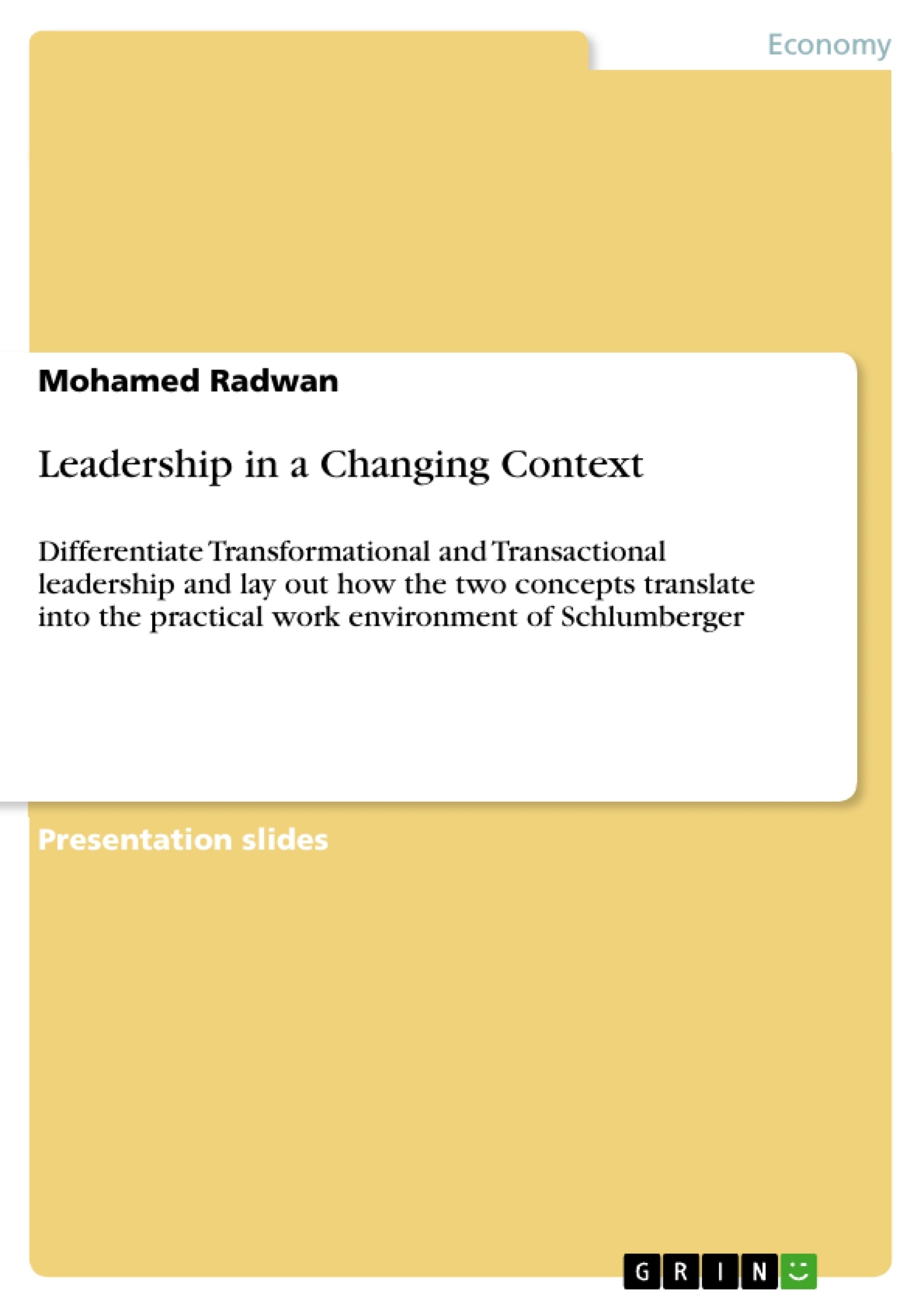The presentation discusses the theories of transformational and transactional leadership in the first seven slides, application to Schlumberger in the next six slides, and the usefulness of either of the leadership approaches for the organisation in the next five slides. The presentation contains recommendations and a conclusion. Harvard referencing is used throughout the presentation.
Inhaltsverzeichnis (Table of Contents)
- Elements of Transactional Leadership
- Baseline Transactional Leadership Implementation
- Transactional Leadership for Motivation
- Elements of Transformational Leadership
- Techniques
- The Transformational Leadership Process
- Comparison of Transformational and Transactional Leadership
- Transactional vs Transformational
- Transformational and Transactional Leadership: Complementary Approaches
- Situational Selection
- Transactional Leadership in the Workplace
- Transformational Leadership in the Workplace
Zielsetzung und Themenschwerpunkte (Objectives and Key Themes)
This presentation explores the theories of transformational and transactional leadership, their practical applications in the Schlumberger work environment, and their effectiveness in motivating employees.
- Differentiating between transformational and transactional leadership
- Analyzing the application of these leadership styles in the Schlumberger workplace
- Evaluating the effectiveness of each style for motivating employees
- Understanding the potential advantages and disadvantages of each style
- Exploring the possibility of using both styles in a complementary way
Zusammenfassung der Kapitel (Chapter Summaries)
The first chapter defines and explores the elements of transactional leadership, including its strategies, implementation, and motivational factors. It examines the use of rewards and sanctions, management by exception, and the leader's role in providing clear guidance and direction. The chapter also discusses the cultural variability of rewards and the importance of tailored approaches.
The second chapter introduces transformational leadership, defining it as a process that involves leader-follower interactions to motivate and advance morale. It examines key components such as idealized influence, intellectual stimulation, individualized consideration, and inspirational motivation. The chapter also explores the relationship between transformational leadership and organizational learning, and the role of employee empowerment in driving innovation.
The third chapter compares and contrasts transformational and transactional leadership, examining their source of power, follower reactions, time frames, rewards, supervision, counselling focus, and locus of change. It emphasizes the importance of selecting the most suitable approach based on the specific situation and employee characteristics.
The fourth chapter argues that transformational and transactional leadership are not mutually exclusive and can be used in a complementary manner. It presents a model depicting the additive effect of transformational leadership on performance outcomes when combined with transactional leadership techniques.
The fifth chapter discusses the practical implications of both leadership styles in the workplace. It highlights the usefulness of transactional leadership for motivating employees through extrinsic rewards and for addressing situations involving frequent mistakes. Conversely, it emphasizes the broader applicability of transformational leadership in fostering relationships, inspiring commitment, and driving innovation.
Schlüsselwörter (Keywords)
This presentation focuses on the concepts of transformational and transactional leadership, their practical application in the work environment of Schlumberger, and their effectiveness in motivating employees. Key terms include leadership styles, rewards and sanctions, organizational learning, employee empowerment, innovation, and motivation.
- Quote paper
- Mr Mohamed Radwan (Author), 2015, Leadership in a Changing Context, Munich, GRIN Verlag, https://www.grin.com/document/424829




